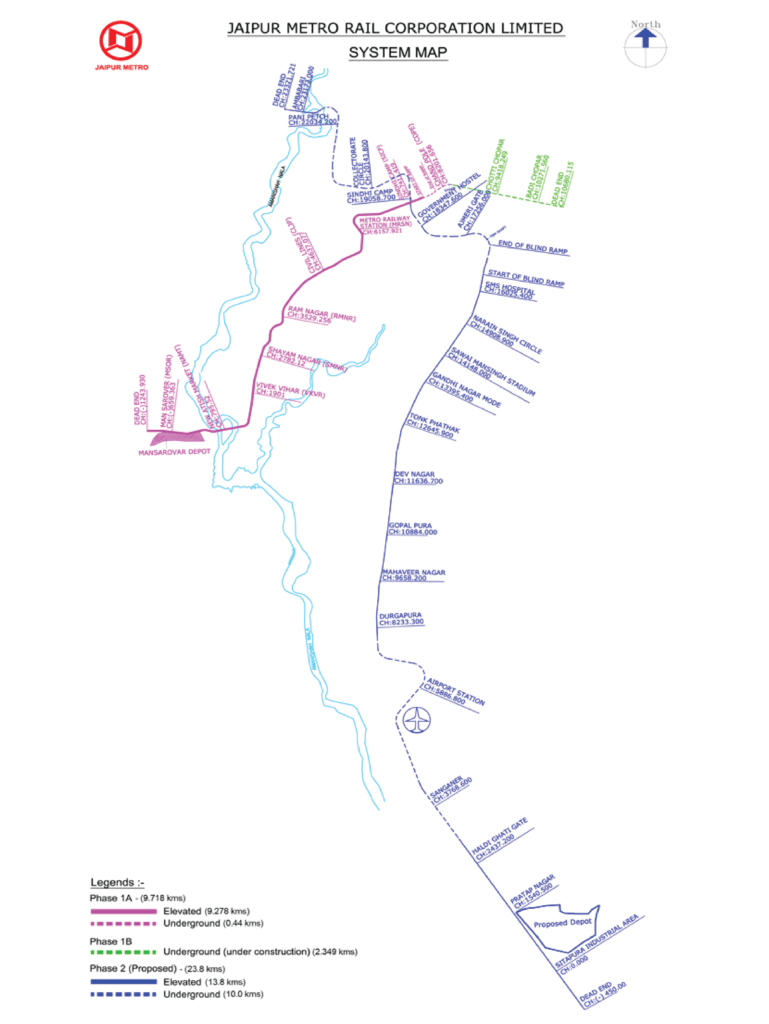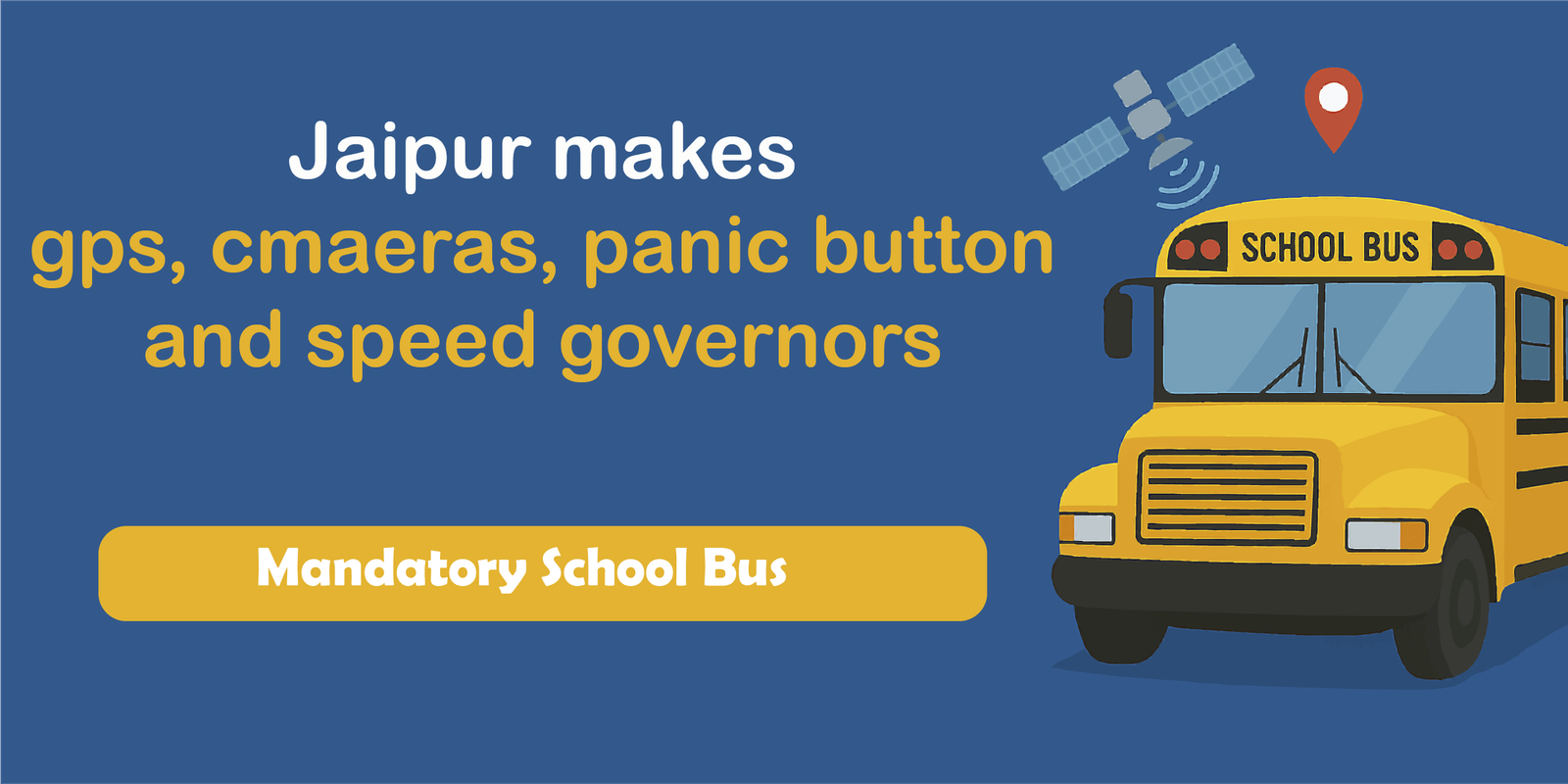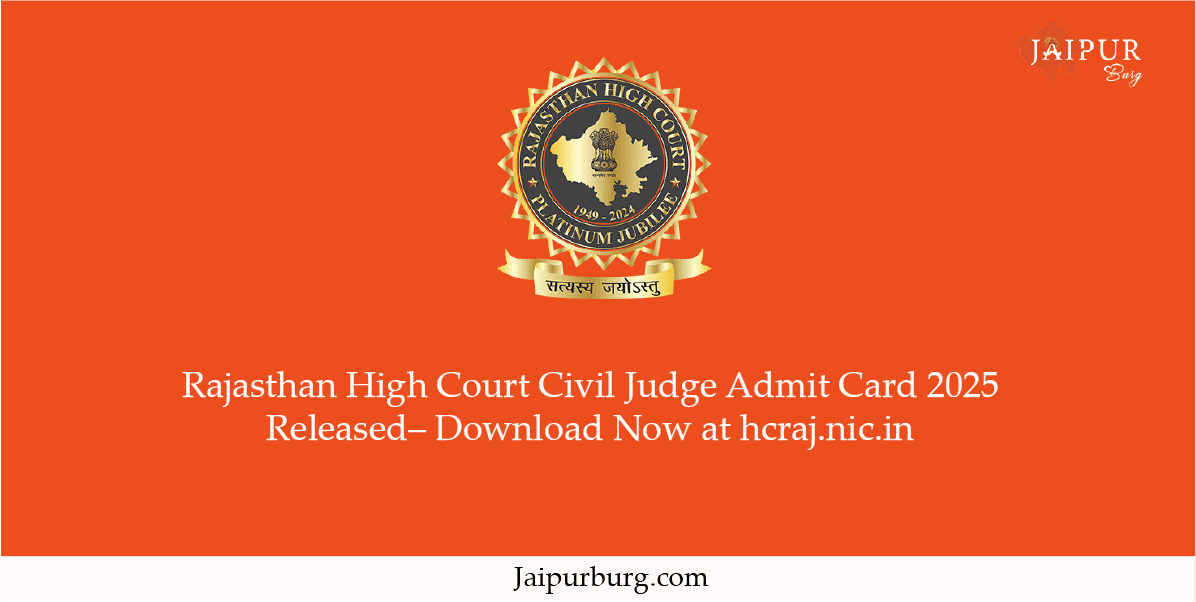Jaipur, the vibrant capital of Rajasthan, is a city on the move. The Jaipur Metro plays a crucial role in its transportation system, and now, with Phase 2, it’s set to reach new heights.
Jaipur Metro Phase 2 Overview:
Jaipur Metro Phase 2 is an ambitious project aimed at expanding the city’s transportation network and easing travel for millions of residents. This project will extend the metro line from Sitapura Industrial Area to Ambabari and Vidyadhar Nagar, Todi Mod.
Jaipur Metro Key Project Highlights:
- Expanded Route: Phase 2 will extend the metro line from Sitapura Industrial Area to Ambabari and Vidyadhar Nagar, Todi Mod, connecting several key areas of the city.
- Modern Technology: The Jaipur Metro Phase 2 will utilise the latest technologies, ensuring a safe and comfortable travel experience for passengers.
- Environmentally Friendly: The metro is an eco-friendly transportation system, which will help reduce pollution in the city.
- Economic Development: This project will boost the city’s economic development, create new employment opportunities, and facilitate business.
- Budget: With a budget of ₹12,000 crore, allocated through the Rajasthan Metro Rail Corporation, the work from Sitapura Industrial Area to Ambabari and Vidyadhar Nagar, Todi Mod is proposed.
Jaipur Metro Project Significance:
Jaipur Metro Phase 2 is a vital project for the city’s development. It will not only ease transportation but also promote economic growth. This project will benefit millions of people and help make Jaipur a modern and developed city.
Jaipur Metro Connecting Sitapura to Todi Mod
The current buzz around Jaipur Metro Phase 2 centers on a significant expansion plan stretching approximately 36 kilometers from Sitapura in the south to Todi Mod (Sikar Road) in the north. This ambitious project aims to integrate crucial areas of the city, fostering better connectivity for residents, businesses, and visitors alike. Think about the ease of travel this will bring – connecting industrial hubs with residential areas and commercial centers.
While initial plans envisioned a different route for Phase 2 (Ambabari to Sitapura Industrial Area), recent developments and a revised Detailed Project Report (DPR) suggest a broader scope, encompassing the Sitapura to Todi Mod corridor. This adjustment reflects the growing needs of our expanding city and the vision for a more interconnected Jaipur. Exciting times are ahead.
Jaipur Metro Unveiling the 35 Planned Stations
One of the most talked-about aspects of this expansion is the proposed number of stations. Reports indicate that approximately 35 stations are planned along the Sitapura to Todi Mod route. This suggests a significant level of accessibility, potentially placing a metro station within convenient reach for a large portion of the city’s population. Imagine stepping out of your home or workplace and having a metro station just around the corner.
While the official list of all 35 stations is yet to be finalized and publicly released by the Jaipur Metro Rail Corporation (JMRC), we can anticipate that these stations will strategically serve key residential areas, industrial zones, commercial hubs, educational institutions, and important landmarks along the corridor. Keep an eye out for official announcements as the DPR progresses.
The Underground and Elevated Tapestry: Navigating Jaipur’s Landscape
Jaipur’s unique landscape and urban fabric necessitate a thoughtful approach to metro line construction. Phase 2 is planned to incorporate a blend of elevated and underground corridors, each serving specific needs and minimising disruption to the city’s existing infrastructure. Let’s break down the current understanding of these routes:
Elevated Corridors: Soaring Above the City
- A significant portion of the Sitapura to Todi Mod route is expected to be elevated. This is a common approach in urban metro projects as it allows for faster construction, reduces the need for extensive land acquisition, and offers commuters a unique perspective of the cityscape. Imagine gliding above the bustling streets, taking in panoramic views of Jaipur!
- Specifically, the route from Sitapura to Pinjarapole Gaushala is planned to be elevated. This stretch likely covers the industrial areas and the initial residential zones heading north.
- Another significant elevated section is planned from the B-2 Bypass intersection to Ashok Marg (Tonk Road). This will connect a major arterial road with important commercial and residential areas.
- The route further extends in an elevated manner through key areas like Khasakothi Circle, Collectorate Circle, Chinkara Canteen, Panipech, and Ambabari. This indicates a continuous elevated stretch covering a significant central part of the city.
- Finally, the metro will proceed in an elevated fashion from the Bhawani Niketan educational institution on Sikar Road, towards Harmada and further to Todi Mod. This will cater to the northern expansion of the city.
Underground Corridors: Delving Beneath the Surface
- While the majority of Phase 2 appears to be elevated, strategic underground sections are crucial for navigating densely populated areas, heritage zones, and sensitive locations like the airport. Going underground minimises land acquisition challenges and reduces visual impact in critical areas.
- A key underground corridor is proposed near the Jaipur International Airport. Specifically, an underground station is planned on Tonk Road near the Sanganer police station, providing direct access to Terminal 1 of the airport. This will be a game-changer for travellers, offering a seamless connection between air and metro travel! ✈️
- From Gaushala onwards, the metro corridor is also expected to go underground. This might be to navigate through more congested or sensitive urban areas.

The Interplay of Elevated and Underground: A Smart Approach
The decision to utilise both elevated and underground corridors reflects a strategic approach to urban planning and infrastructure development. Elevated sections offer efficiency and cost-effectiveness in less congested areas, while underground sections provide solutions for navigating dense urban cores and sensitive zones. This hybrid approach aims to deliver a comprehensive and efficient metro network for Jaipur.
Connecting You: What Does This Mean for Jaipur?
The expansion of the Jaipur Metro through Phase 2 promises a multitude of benefits for our city:
- Reduced Traffic Congestion: By offering a convenient and efficient public transport alternative, the metro will help alleviate the growing burden of traffic on our roads.
- Improved Connectivity: Connecting previously underserved areas like Sitapura and Todi Mod will enhance accessibility for residents and businesses.
- Faster Commute Times: Zipping through the city on the metro will significantly reduce travel times, allowing you to spend more time on what matters most.
- Environmental Benefits: Encouraging the use of public transport will contribute to lower carbon emissions and a greener Jaipur.
- Economic Growth: Improved connectivity can boost economic activity by facilitating the movement of people and goods.
Stay Tuned for More Updates! 📢
The Jaipur Metro Phase 2 is an evolving project, and details may be subject to further revisions as the DPR progresses and construction commences. We will continue to keep you updated on the latest news, station lists (once officially announced), and progress milestones.
What are your thoughts on the planned route and the mix of elevated and underground corridors? Which new stations are you most excited about? Share your opinions and expectations in the comments below!















Add a comment